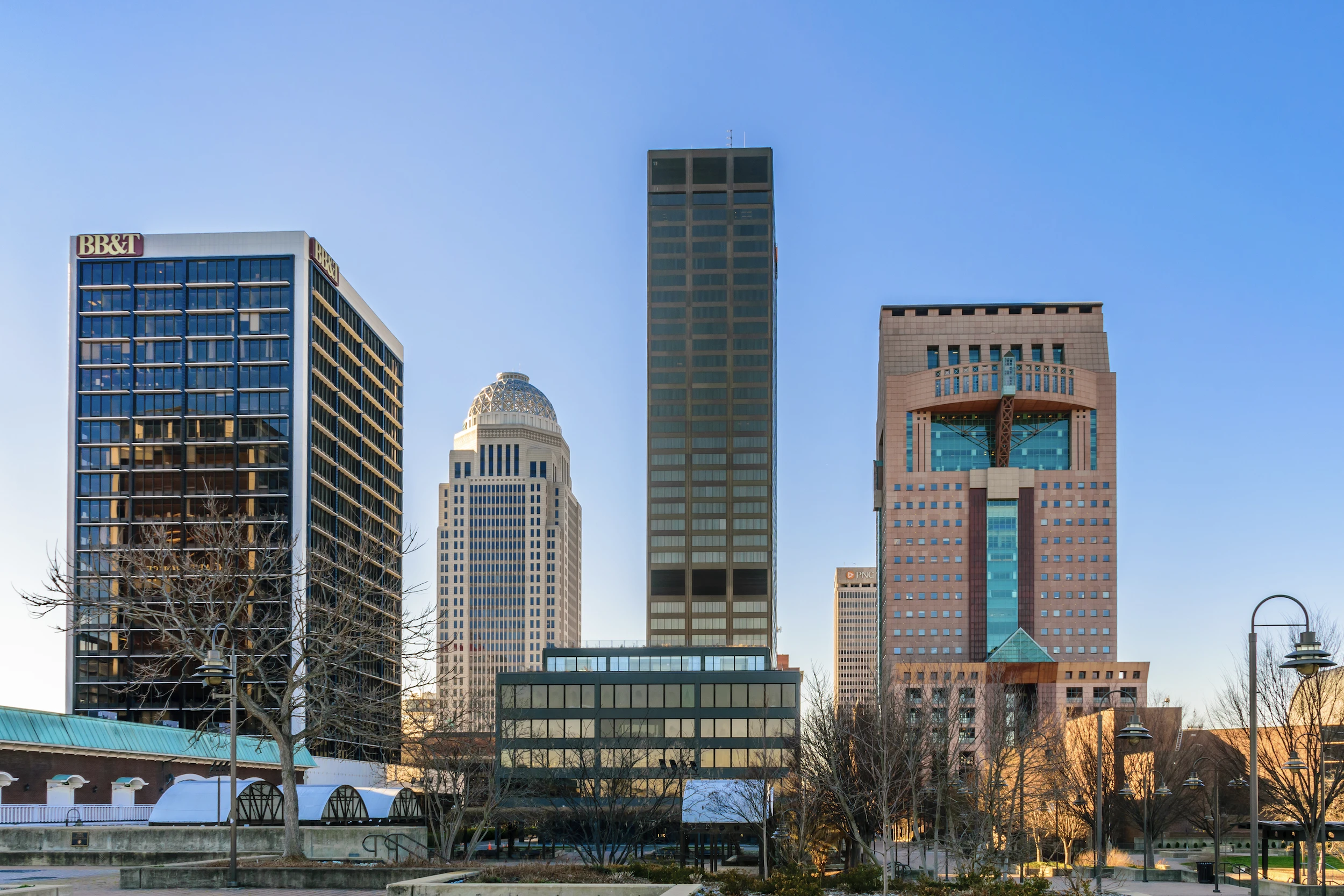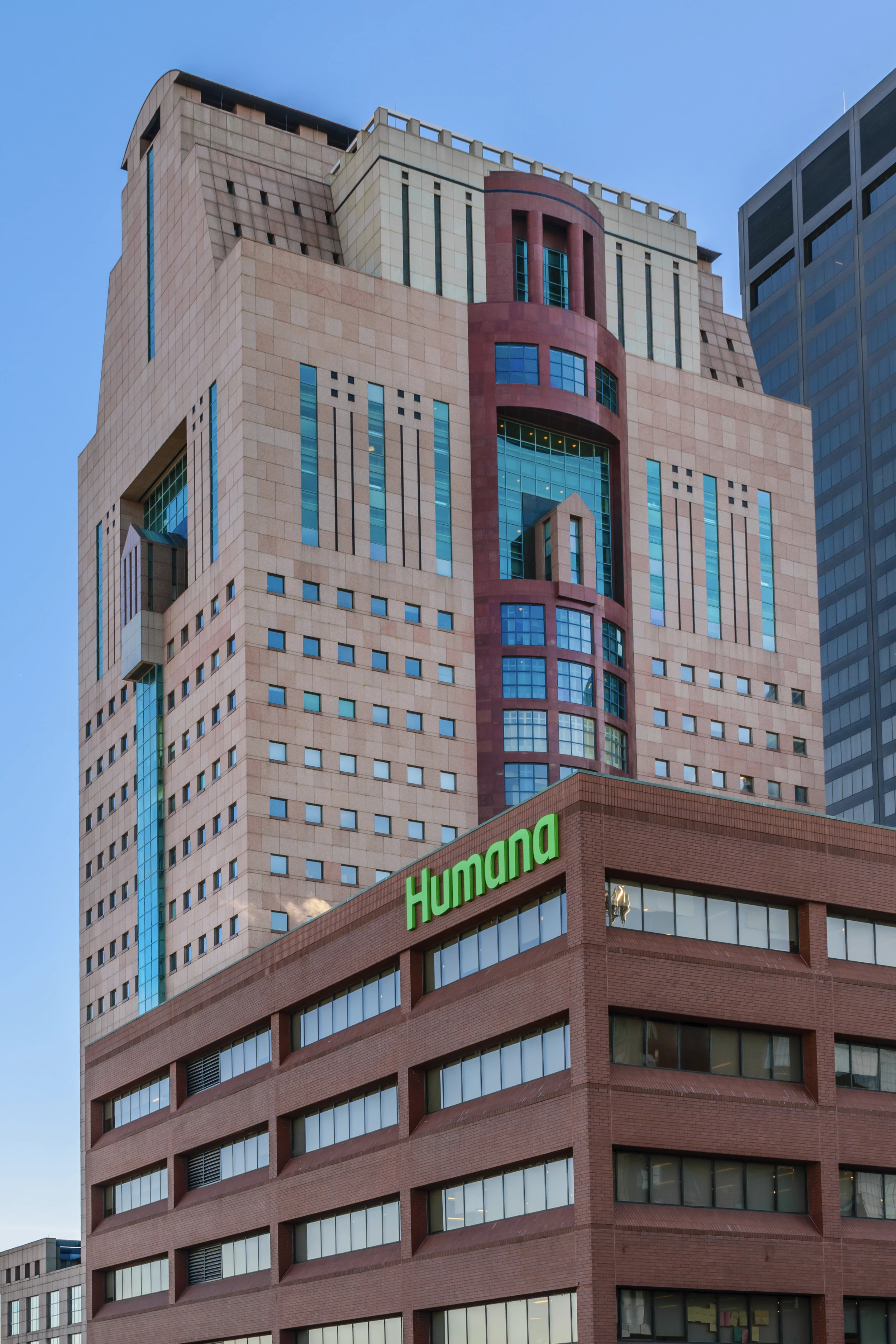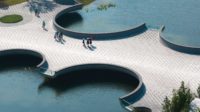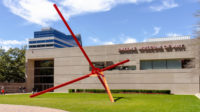Louisville’s famed “Milk Carton” is being emptied.
Announced earlier this week, health insurance behemoth Humana is vacating its headquarters at 500 Main Street in downtown Louisville in a large-scale consolidation maneuver prompted in part by the rise in remote and hybrid work following the COVID pandemic.
“Our employees across the country have embraced new ways of working together in both traditional office settings and through the use of collaborative technology,” wrote the company in a statement shared with the media. “At the same time, we have continued to assess our future office space needs in light of reduced daily utilization and the needs of our business.”
Completed in 1985 and honored with the AIA Honor Award two years later, the 26-story office tower—a “building of great dignity and a building of great energy and passion,” extolled Paul Goldberger in the New York Times upon its opening—was designed by Michael Graves and is considered an icon of Postmodern architecture. The tower is also at the center of a lawsuit filed last March by Humana against Princeton, New Jersey–based Michael Graves & Associates along with DeSimone Consulting Engineering Group and Wehr Constructors over alleged structural defects first discovered in 2020—35 years after the building’s completion—and for which the Fortune 500 company seeks compensation for remediation costs. “Although the Humana Tower is safe for our associates and visitors, since 2020 Humana has invested a considerable amount in remediating structural components of the Humana Tower to rectify original design, engineering, and construction issues,” the company acknowledged in its statement.
The move out the 650,000-square-foot building, which Louisville Courier Journal columnist Joseph Gerth deemed “another death knell for downtown Louisville,” will result in a sizable glut of empty commercial office space in a once-busy central business district already hollowed out by post-pandemic vacancies. Of the 66 major American and Canadian cities ranked in the University of Toronto’s Downtown Recovery rankings of post-COVID activity in urban cores, Kentucky’s largest city has the most difficulty rebounding alongside St. Louis, Missouri.

Although not the tallest building in Louisville, the award-winning Humana Tower is emblematic of the city's skyline. Photo by Thomas Kelley, Shutterstock
The move will reportedly take place over the next 18 to 24 months; all Humana employees currently working from the Humana Tower will shift to the company’s newly renovated Waterside-Clocktower campus, which is also located in downtown Louisville to the east of the company’s soon-to-be-vacated flagship building. Per the Courier Journal, roughly 25 percent of the company’s total local workforce—about 2,500 people—currently work at the two locations.
The fate of the tower is not immediately clear as Humana, which owns the property, has reportedly not decided whether they plan to maintain ownership or sell the building. The company did say that they are “working closely with Mayor [Craig] Greenberg’s office and other city agencies to identify potential future uses for the property so that it can continue to be an asset to Downtown Louisville.”
In an Instagram poll conducted by local media outlet LouToday, Louisville residents were asked how they thought the building should be reused in its post-Humana afterlife. Respondents offered a range of ideas, including converting the tower to a mixed-income residential complex or a high school for technology and the arts.
Despite its architectural significance and prominence on the Louisville skyline, the Humana Tower does not enjoy any sort of landmark protection. It was included in a list of 15 landmark-worthy Postmodern buildings identified by architect Robert A.M. Stern, a contemporary of the late Graves, published in the February issue of RECORD. Graves' Walt Disney World Swan and Dolphin Resorts in Florida also appear on Stern’s list.

Photo by Thomas Kelley/Shutterstock
Heralded by the Society of Architectural Historians as “a successful demonstration of how architecture after Modernism can enliven urban space through color, contextualism, and metaphorical references to the larger environment,” Graves’s design triumphed over sleeker, glass-and-steel proposals from the likes of Norman Foster and César Pelli in an early-1980s competition held by Humana for its new Louisville headquarters. Signature features of the building include its generous public loggia and waterfall fountain on the ground level, curved open-air observation deck, and the sloping, pyramidal form of the pink granite–clad tower’s upper reaches.
“It re-established the street edge as an essential urban form,” writes Michael Graves & Associates office of the tower in a “legacy project” essay published on the firm’s website. “Its architectural character and response to context became a new urban paradigm, much imitated in the years following its construction.”
The Humana Tower opened three years after Graves’ groundbreaking Portland Building in downtown Portland, Oregon. Another paragon of Postmodernism (albeit a considerably more divisive one), the Portland Building was added to the National Register of Historic Places in 2011. Several years later, the 15-story municipal office building, plagued by myriad structural issues and populated by unadoring workers, dodged demolition when the city opted to instead embark on an extensive reconstruction effort.






Post a comment to this article
Report Abusive Comment